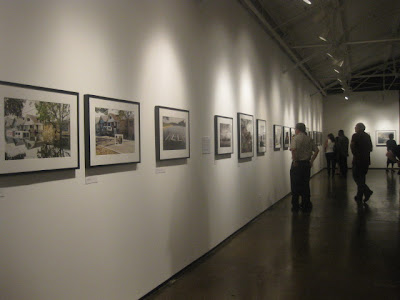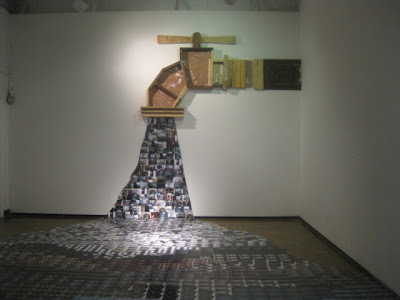From the book review:
UNO Press commemorates K+5 with books 'When the Water Came,' 'Before (During) After' by Suzanne Stouse, published on Sunday, August 29, 2010 in the Times-Picayune.
......

Also from UNO Press, “Before (During) After: Louisiana Photographers’ Visual Reactions to Hurricane Katrina” ($24.95) is another treasure, a beautifully designed book with powerful pictures and essays by 12 area photographers on the ways Katrina refocused their work.
"Before (During) After: Louisiana Photographers' Visual Reactions to Hurricane Katrina," is another Katrina treasure.
How do they see things now? It varies wildly, but examine two snapshots: Jennifer Shaw, who for years photographed urban landscapes, discovered “a wonderful catharsis” after covering the storm’s destruction: telling her own storm story, including the birth of her son on the day Katrina made landfall. No longer shooting “the world around me, documenting things as I found them,” she began working with hand-painted props, setting up her own “tiny worlds” with tiny people (that’s got to be a king cake baby being held aloft by a larger doll’s hands in one shadowy, lovely shot). Frank Relle segued from artful architectural work to taking pictures of homes’ abandonment. His “overriding lesson” is to “get out there and get the picture, no matter what.” During the storm, “if I contemplated photographic concepts before going out into the barricaded Ninth Ward at night, I don’t think I would have made those photographs” -- like the amazing shot of a listing “dollhouse,” a home with its front wall blown off.
Lori Waselchuk bought a panoramic camera, to use not for epic landscapes but “to study details” of the broken city; she is now shooting striking pictures of people in the hospice program at Angola . In a world almost leeched of color by the destruction, Rowan Metzner, the book’s photo editor, moved from making beautiful abstract portraits of the body in black and white to using color -- the better to capture the telling details in pictures of ruined possessions.
With so many arresting images, there’s no such thing as flipping though this book, whose photographs will be featured in a traveling exhibit Sept. 10-Oct. 16. You’re stopped from the start by a cover image of a drowned, disintegrated keyboard by Samuel Portera, who lost his St. Bernard home and darkroom and finds himself now “revealing a more ominous scene”; by the pickets of a drowned fence poking out of the water, a picture by photojournalist David Rae Morris who after witnessing “such suffering and such incompetence” took a break to teach and recharge; by Eric Julien’s beautiful mixed-media collage work, which he turned to “After,” using the few images he had left from a 10-year collection. He says it was therapeutic, but “my work will never be the same.”
On quite the other hand, Jonathan Traviesa, celebrated for his post-storm photo signage in wide-open places, has “resumed work on my long-term projects with new vitality.” “Non-stop” musician portraitist Zack Smith has slowed down, focusing now on inspired character studies of people around him. Mixed-media artist Elizabeth Kleinveld took up photography in order to document the storm’s effects, and concentrates now on producing lovely riot-of-color photographs enhanced to produce a painterly quality. Known for his photographs of “living cultural traditions” – see the fabulous shot of cattle and cowboys moving down a river in a seaworthy pen – Louisiana State Museum system chief photographer Mark J. Sindler now shoots fewer “public rituals and celebrations,” and more “ordinary aspects of life,” his building blocks in “an inclusive visual archive.”
Photojournalist/LSU professor Thomas Neff, who for years pictured people on the country’s rapidly disappearing single-family farms and ranches, turned to photographing Katrina “holdouts,” those who couldn’t or wouldn’t leave the city, a project that would lead to an Ogden Museum show that is now a traveling exhibit. He still visits with those subjects.
In an afterword, John Biguenet, who also wrote the impassioned foreword, calls the photographers witnesses to “a crime for which no has been held accountable.” Louisiana State Museum curator of visual arts Tony Lewis calls them agents of change: “As we internalize these images,” he writes, “and make them part of our individual and collective memory, if we can see them as calls to action, that can make all the difference.”































